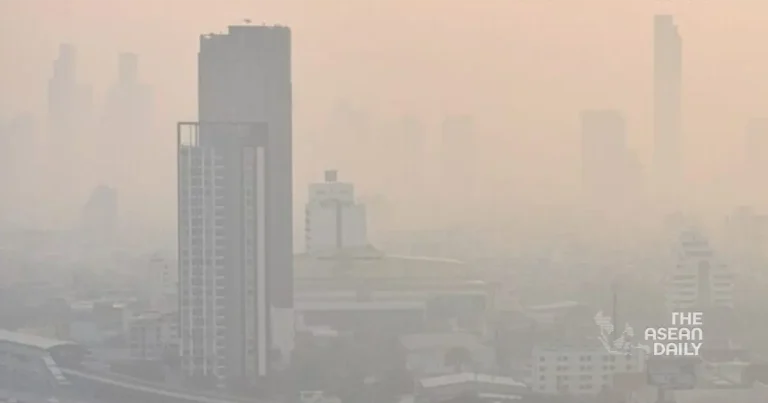3-2-2025 (BANGKOK) Alarming levels of dangerous ultrafine dust pollution have engulfed nearly three-quarters of Thailand’s provinces, sparking serious health concerns across the nation. Recent data from the Geo-Informatics and Space Technology Development Agency (Gistda) reveals that 57 out of the country’s 77 provinces are grappling with unsafe levels of air pollution.
The situation has reached critical levels in 13 provinces, where hazardous concentrations of PM2.5 – particles measuring 2.5 micrometres or less in diameter – have been recorded. Most concerning is the northeastern province of Nong Bua Lam Phu, where PM2.5 readings hit a staggering 99.1 microgrammes per cubic metre over a 24-hour period, nearly triple the safe threshold of 37.5µg/m³.
Other severely affected regions include Si Sa Ket and Ubon Ratchathani, recording dangerous levels of 92.1µg/m³ and 88.8µg/m³ respectively. The capital city Bangkok has not been spared, with measurements showing PM2.5 levels of 75.5µg/m³, placing it among the thirteen worst-affected areas.
Meanwhile, 44 provinces, including major areas such as Ayutthaya, Kanchanaburi, and Rayong, are experiencing orange-level warnings, indicating pollution levels that have begun to impact public health. These regions showed PM2.5 readings ranging from 44.1 to 74.8µg/m³.
A glimmer of hope remains in the country’s northern and southern regions, where twenty provinces maintain safer air quality levels. Particularly noteworthy are Krabi, Lamphun, Chiang Mai, and Mae Hong Son, which recorded good air quality with PM2.5 levels well below the safety threshold. Mae Hong Son demonstrated the cleanest air with just 16.5µg/m³.
Sixteen provinces, predominantly in the south, including Pattani, Yala, and Phuket, reported moderate air quality with yellow-level warnings, maintaining PM2.5 concentrations between 27 and 36.5µg/m³.




